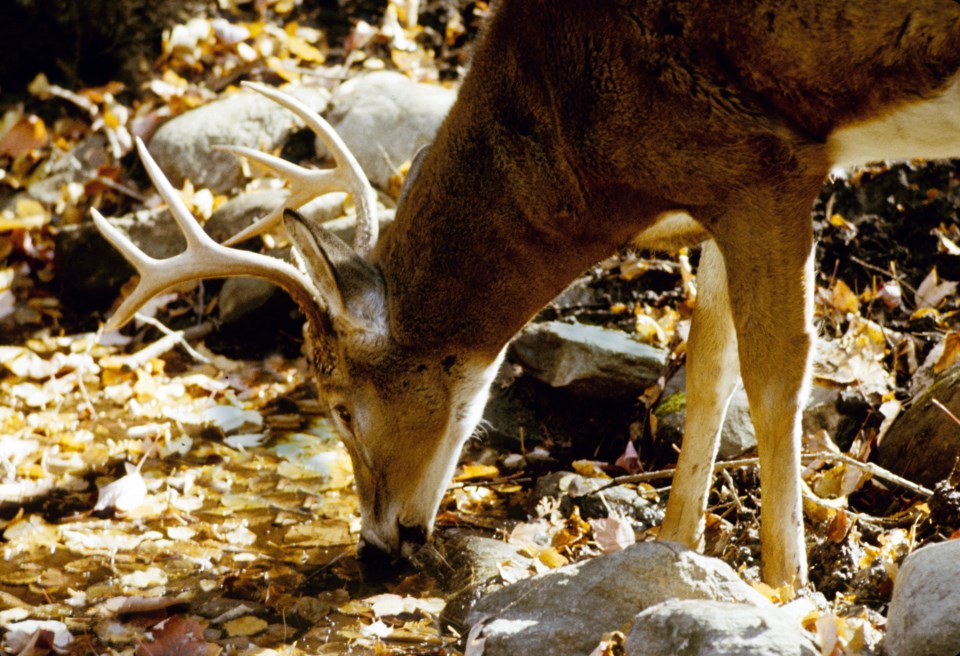BOOM! BOOM! KA-POW! Yep, autumn's arrived and with it comes the annual tradition (and associated controversy) of hunting. Much has been written about this topic, both 'for' and 'against', much of it emotional (from both sides) with the odd fact thrown in here and there for credibility.
Full disclosure here… if you were to ask me if I’m a hunter my answer would be “used to be, and still am.”
Once upon a time, in the 1970s, hunting was a major activity for me, with ducks, geese, grouse and rabbits pursued with great enthusiasm. Nowadays, not so much, at least with rifle or shotgun.
My swing to photography let me use acquired hunting skills to get close to quarry for that great ‘shot’ with the camera. Hunting is hunting, just the end result may vary.
This column is not near long enough to tackle the full explanation of why people hunt. However, based on my experiences as a gun hunter, and from the behaviours of other hunters known or encountered, there appears to be a pattern to the stages or levels a hunter goes through.
Level One is the curiosity stage – how does a gun work? Can I shoot it? Can I actually hit a target? This is the entrance level and may be informal or quite structured as to manner in which it is taught. Without proper guidance and supervision this can be a very dangerous stage.
Level Two is the proficiency of target shooting and the subsequent boredom of shooting holes in a paper target. Other targets become attractive, such as cans, bottles, signs, mailboxes, little birds, etc.
The destructive power of the bullet is witnessed, now coupled with the accuracy skills already learned. This stage is usually short-lived by the individual, but can have wide-ranging negative effects on others in our society.
Level Three is the urge to begin hunting animals. The shooter has proven his/her accuracy, knows the destructive power of the weapon, and now wants to bring this 'training' to fruition.
At fair expense of time and money, classes are attended, exams are written, licenses are bought and hunting regulations are studied. Laws are strictly obeyed in order to gain and retain the privilege of being a licensed hunter.
Level Four is the realization that rabbits, geese, deer and other game species are not easily found. Nor are there a lot of "bush cops" (Conservation Officers) out there to monitor you.
And so other species of wildlife become the targets, with the slogans of "if it flies, it dies" and "if it's brown, it's down" sadly ringing true. This stage is quite unacceptable to more seasoned hunters and the public in general, but it is, none-the-less, a stage that most will experience.
Unfortunately, there are those who achieve only level four and cause all sorts grief for law-abiding hunters. Conservation officers don't arrest those who follow the rules, and the media doesn't cover the safe and successful hunts.
Therefore, only those who blatantly defy the laws will eventually come before the public's eye. If every story read in the newspaper is about a bad hunter, the assumption becomes that all hunters are bad.
Level Five is the fine-tuning of hunting skills. Here the serious hunter studies and learns the nuances of attracting and taking game animals. Decoys, camo clothing, retrieving dogs, boats, tree stands, calls and other sundry are bought and utilized. The economy flourishes while the garage becomes a tad more cluttered with each passing season.
Level Six is the joining with others who share an interest in the out of doors. Hunt camps, conservation clubs, Facebook groups, and angler and hunter organizations are joined and supported. Habitat enhancement projects sometimes are undertaken with the understanding and intent of increasing both wildlife numbers and hunting opportunities. There is also a bit of competition to take a deer with the biggest antlers.
Level Seven is the desire for solitary outings. Selective hunting is undertaken, in that only safe shots and clean kills are assured. The gun may not even be fired, even though game is seen. However, putting meat on the table is still a measure of success. And there is realization that you can’t eat antlers.
And that leads us into Level Eight, which is "the brotherhood of life" stage, where wildlife is observed and enjoyed, an understanding of ecology is attained, and game is taken only with respect and need, if at all. There is no longer the need to prove one's accuracy skills or hunting prowess.
These eight levels are based on my thoughts and experiences, but I know that many other hunters have passed through most of them. Some levels were quite short-lived (thankfully), while others held us for years. Many people have attained Level Six (joining other like-minded people) and others are maturing into the solitude and appreciation stages.
The number of active hunters in southern Ontario has dwindled significantly since the 1970s. As human residential areas infiltrate what was once vast farmland, as social mores swing away from an activity that was once commonly accepted, as tragic gun-related stories get spread far, wide and quickly (even if the story has nothing to do with hunting), all these add up to less acceptance/tolerance from the general non-hunting public.
Hunting is a rather complex issue. Only those who hunt or have hunted can attempt to answer that simple question "why do you go hunting?" but shouldn't be surprised if finding an easy and concise answer is as elusive as connecting with that twelve-point buck.



